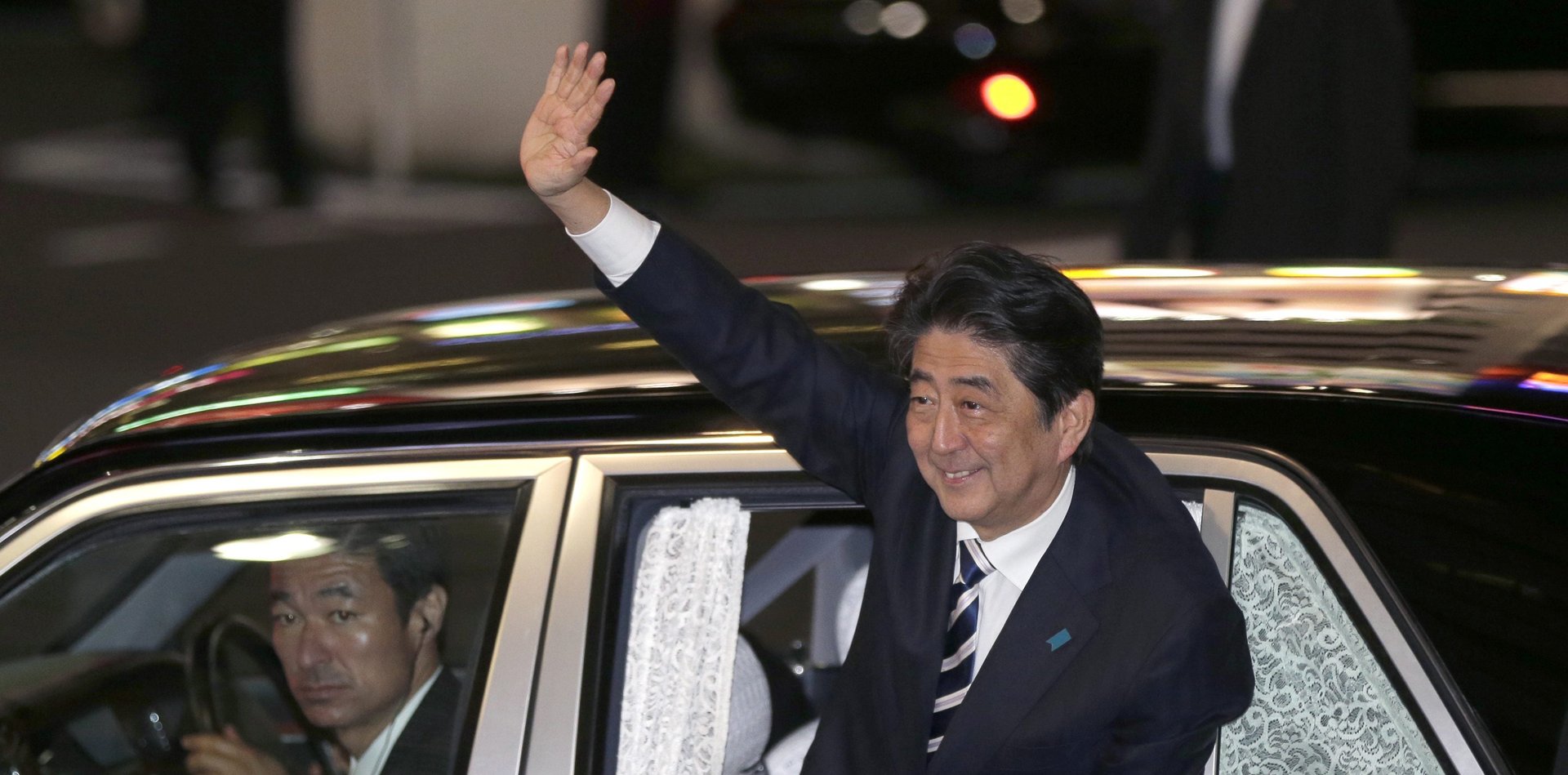Shinzo Abe just moved closer to becoming Japan’s longest-serving leader
This story updated on Oct. 23, 00:28 ET.


This story updated on Oct. 23, 00:28 ET.
Japanese prime minister Shinzo Abe’s party comfortably won parliamentary elections held Sunday (Oct. 22), bringing him one step closer to becoming the country’s longest-serving leader.
Abe’s Liberal Democratic Party (LDP) held on to a two-thirds majority with its partner Komeito, the Asahi Shimbun said Monday. The ruling combination won 312 seats of the 465 lower house seats in play, only slightly less than the 318 they had before the election. Four seats weren’t called, with counting in some parts delayed due to the effects of Typhoon Lan.
Abe called the election last month and dissolved the lower house of Japan’s parliament, or Diet, in a gamble to further cement his power during what he has called a time of “national crisis” for Japan, citing the increasing threat from North Korea. A new challenger in the form of popular Tokyo governor Yuriko Koike, and her new Party of Hope, tried to derail Abe’s plans, but ultimately failed. A new left-leaning choice, the Constitutional Democratic Party (CDP), hastily formed ahead of the vote from members of the disbanded Democratic Party, formerly the main opposition, is the second-largest bloc in the lower house with 54 seats, Asahi Shimbun reported.
The LDP’s stranglehold on power has been a near constant in Japan in the period after the Second World War—it’s only been out of power for a few brief years, most recently in 2009-2012 when the leadership was in the hands of the opposition Democratic Party, an experiment that many regard as a failure. But even amid the longevity of the LDP’s leadership, it’s never delivered stability in the form of long-serving leaders. Instead, due to Japan’s parliamentary system and the deeply factionalized nature of the LDP, leaders only serve at most a couple of years before stepping down.
Abe was already in third place among the ranks of the longest-serving post-war Japanese prime ministers before he won Sunday’s election. Only Eisaku Sato (1964-1972) and Shigeru Yoshida, who served in 1946 for a year and then from 1948-1954 were ahead of him. The longest serving prime minister in Japan is Taro Katsura, who was prime minister for three terms at the turn of the last century. Abe would overtake Taro if he’s still prime minister in November 2019.
Abe, who served his first term from 2006-2007 and returned to power in December 2012, surpassed (paywall) populist prime minister Junichiro Koizumi’s stint in power (2001-2006) in May.
The LDP in March rubber-stamped a rule change that would extend the party leader’s term limit, and allow Abe to serve a third consecutive three-year term. A win now should boost Abe’s chances of emerging victorious in an internal party leadership election next year.
During his campaign, Abe played up his credentials as a global statesman who, as a friend of US president Donald Trump’s, could help Japan navigate safely through tense times in the region—the North Korean threat was front and center of Abe’s message to voters. He also highlighted the positive results of his “Abenomics” economic reform blueprint, with metrics such as economic growth, employment, and business confidence looking better now than they have in years.